Nedjma Ousidhoum
Beyond Keywords: Evaluating Large Language Model Classification of Nuanced Ableism
May 26, 2025Abstract:Large language models (LLMs) are increasingly used in decision-making tasks like r\'esum\'e screening and content moderation, giving them the power to amplify or suppress certain perspectives. While previous research has identified disability-related biases in LLMs, little is known about how they conceptualize ableism or detect it in text. We evaluate the ability of four LLMs to identify nuanced ableism directed at autistic individuals. We examine the gap between their understanding of relevant terminology and their effectiveness in recognizing ableist content in context. Our results reveal that LLMs can identify autism-related language but often miss harmful or offensive connotations. Further, we conduct a qualitative comparison of human and LLM explanations. We find that LLMs tend to rely on surface-level keyword matching, leading to context misinterpretations, in contrast to human annotators who consider context, speaker identity, and potential impact. On the other hand, both LLMs and humans agree on the annotation scheme, suggesting that a binary classification is adequate for evaluating LLM performance, which is consistent with findings from prior studies involving human annotators.
Social Good or Scientific Curiosity? Uncovering the Research Framing Behind NLP Artefacts
May 24, 2025Abstract:Clarifying the research framing of NLP artefacts (e.g., models, datasets, etc.) is crucial to aligning research with practical applications. Recent studies manually analyzed NLP research across domains, showing that few papers explicitly identify key stakeholders, intended uses, or appropriate contexts. In this work, we propose to automate this analysis, developing a three-component system that infers research framings by first extracting key elements (means, ends, stakeholders), then linking them through interpretable rules and contextual reasoning. We evaluate our approach on two domains: automated fact-checking using an existing dataset, and hate speech detection for which we annotate a new dataset-achieving consistent improvements over strong LLM baselines. Finally, we apply our system to recent automated fact-checking papers and uncover three notable trends: a rise in vague or underspecified research goals, increased emphasis on scientific exploration over application, and a shift toward supporting human fact-checkers rather than pursuing full automation.
SemEval-2025 Task 11: Bridging the Gap in Text-Based Emotion Detection
Mar 10, 2025Abstract:We present our shared task on text-based emotion detection, covering more than 30 languages from seven distinct language families. These languages are predominantly low-resource and spoken across various continents. The data instances are multi-labeled into six emotional classes, with additional datasets in 11 languages annotated for emotion intensity. Participants were asked to predict labels in three tracks: (a) emotion labels in monolingual settings, (b) emotion intensity scores, and (c) emotion labels in cross-lingual settings. The task attracted over 700 participants. We received final submissions from more than 200 teams and 93 system description papers. We report baseline results, as well as findings on the best-performing systems, the most common approaches, and the most effective methods across various tracks and languages. The datasets for this task are publicly available.
BRIGHTER: BRIdging the Gap in Human-Annotated Textual Emotion Recognition Datasets for 28 Languages
Feb 17, 2025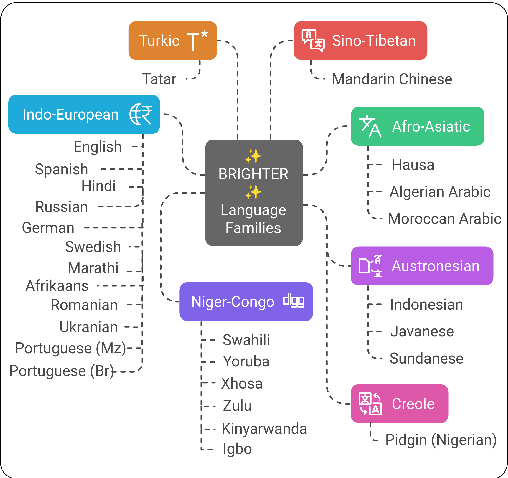
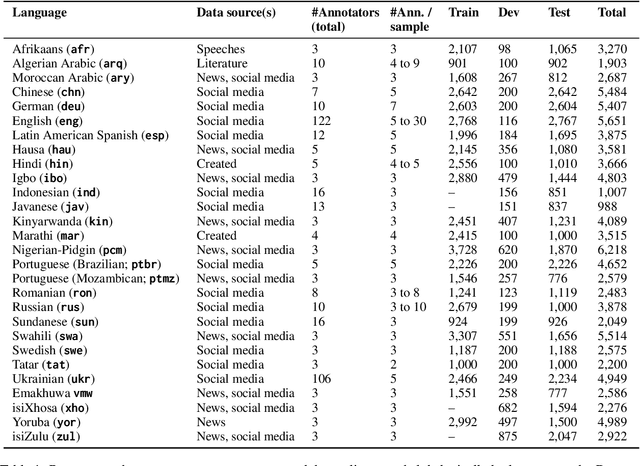
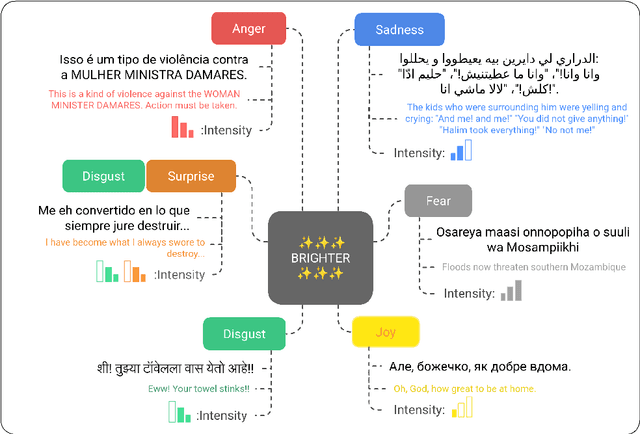
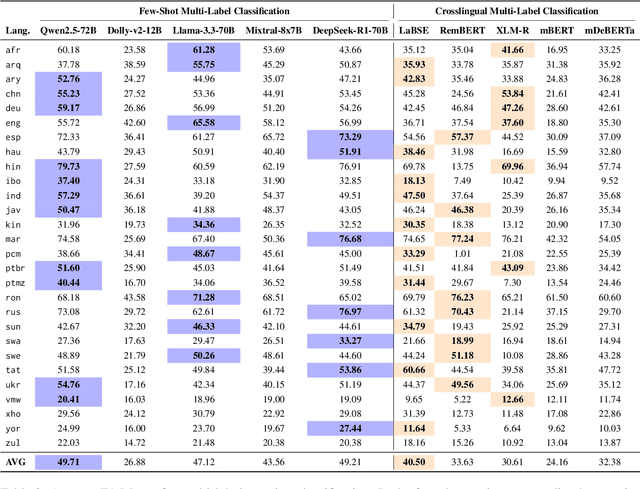
Abstract:People worldwide use language in subtle and complex ways to express emotions. While emotion recognition -- an umbrella term for several NLP tasks -- significantly impacts different applications in NLP and other fields, most work in the area is focused on high-resource languages. Therefore, this has led to major disparities in research and proposed solutions, especially for low-resource languages that suffer from the lack of high-quality datasets. In this paper, we present BRIGHTER-- a collection of multilabeled emotion-annotated datasets in 28 different languages. BRIGHTER covers predominantly low-resource languages from Africa, Asia, Eastern Europe, and Latin America, with instances from various domains annotated by fluent speakers. We describe the data collection and annotation processes and the challenges of building these datasets. Then, we report different experimental results for monolingual and crosslingual multi-label emotion identification, as well as intensity-level emotion recognition. We investigate results with and without using LLMs and analyse the large variability in performance across languages and text domains. We show that BRIGHTER datasets are a step towards bridging the gap in text-based emotion recognition and discuss their impact and utility.
AfriHate: A Multilingual Collection of Hate Speech and Abusive Language Datasets for African Languages
Jan 15, 2025



Abstract:Hate speech and abusive language are global phenomena that need socio-cultural background knowledge to be understood, identified, and moderated. However, in many regions of the Global South, there have been several documented occurrences of (1) absence of moderation and (2) censorship due to the reliance on keyword spotting out of context. Further, high-profile individuals have frequently been at the center of the moderation process, while large and targeted hate speech campaigns against minorities have been overlooked. These limitations are mainly due to the lack of high-quality data in the local languages and the failure to include local communities in the collection, annotation, and moderation processes. To address this issue, we present AfriHate: a multilingual collection of hate speech and abusive language datasets in 15 African languages. Each instance in AfriHate is annotated by native speakers familiar with the local culture. We report the challenges related to the construction of the datasets and present various classification baseline results with and without using LLMs. The datasets, individual annotations, and hate speech and offensive language lexicons are available on https://github.com/AfriHate/AfriHate
AUTALIC: A Dataset for Anti-AUTistic Ableist Language In Context
Oct 21, 2024



Abstract:As our understanding of autism and ableism continues to increase, so does our understanding of ableist language towards autistic people. Such language poses a significant challenge in NLP research due to its subtle and context-dependent nature. Yet, detecting anti-autistic ableist language remains underexplored, with existing NLP tools often failing to capture its nuanced expressions. We present AUTALIC, the first benchmark dataset dedicated to the detection of anti-autistic ableist language in context, addressing a significant gap in the field. The dataset comprises 2,400 autism-related sentences collected from Reddit, accompanied by surrounding context, and is annotated by trained experts with backgrounds in neurodiversity. Our comprehensive evaluation reveals that current language models, including state-of-the-art LLMs, struggle to reliably identify anti-autistic ableism and align with human judgments, underscoring their limitations in this domain. We publicly release AUTALIC along with the individual annotations which serve as a valuable resource to researchers working on ableism, neurodiversity, and also studying disagreements in annotation tasks. This dataset serves as a crucial step towards developing more inclusive and context-aware NLP systems that better reflect diverse perspectives.
Building Better: Avoiding Pitfalls in Developing Language Resources when Data is Scarce
Oct 17, 2024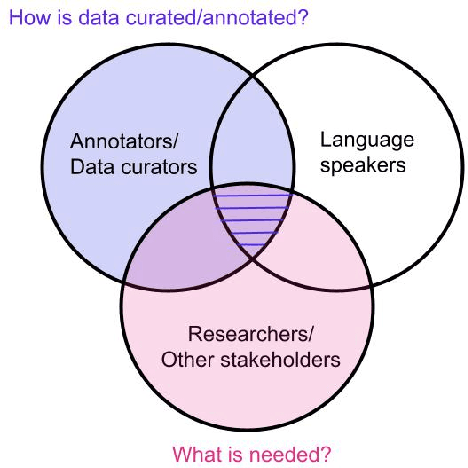

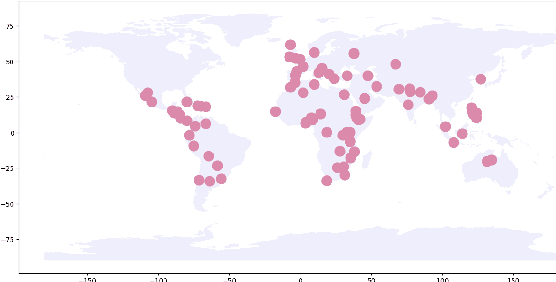
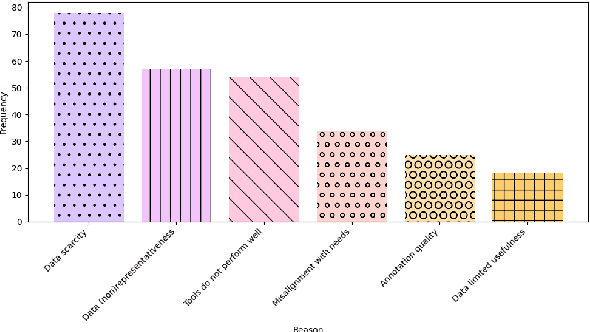
Abstract:Language is a symbolic capital that affects people's lives in many ways (Bourdieu, 1977, 1991). It is a powerful tool that accounts for identities, cultures, traditions, and societies in general. Hence, data in a given language should be viewed as more than a collection of tokens. Good data collection and labeling practices are key to building more human-centered and socially aware technologies. While there has been a rising interest in mid- to low-resource languages within the NLP community, work in this space has to overcome unique challenges such as data scarcity and access to suitable annotators. In this paper, we collect feedback from those directly involved in and impacted by NLP artefacts for mid- to low-resource languages. We conduct a quantitative and qualitative analysis of the responses and highlight the main issues related to (1) data quality such as linguistic and cultural data suitability; and (2) the ethics of common annotation practices such as the misuse of online community services. Based on these findings, we make several recommendations for the creation of high-quality language artefacts that reflect the cultural milieu of its speakers, while simultaneously respecting the dignity and labor of data workers.
WorldCuisines: A Massive-Scale Benchmark for Multilingual and Multicultural Visual Question Answering on Global Cuisines
Oct 16, 2024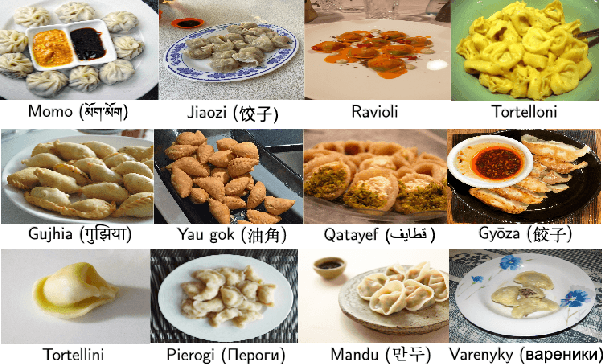

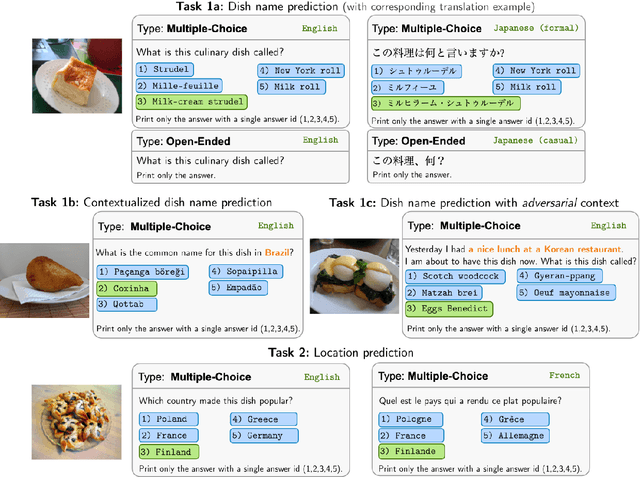

Abstract:Vision Language Models (VLMs) often struggle with culture-specific knowledge, particularly in languages other than English and in underrepresented cultural contexts. To evaluate their understanding of such knowledge, we introduce WorldCuisines, a massive-scale benchmark for multilingual and multicultural, visually grounded language understanding. This benchmark includes a visual question answering (VQA) dataset with text-image pairs across 30 languages and dialects, spanning 9 language families and featuring over 1 million data points, making it the largest multicultural VQA benchmark to date. It includes tasks for identifying dish names and their origins. We provide evaluation datasets in two sizes (12k and 60k instances) alongside a training dataset (1 million instances). Our findings show that while VLMs perform better with correct location context, they struggle with adversarial contexts and predicting specific regional cuisines and languages. To support future research, we release a knowledge base with annotated food entries and images along with the VQA data.
BLEnD: A Benchmark for LLMs on Everyday Knowledge in Diverse Cultures and Languages
Jun 14, 2024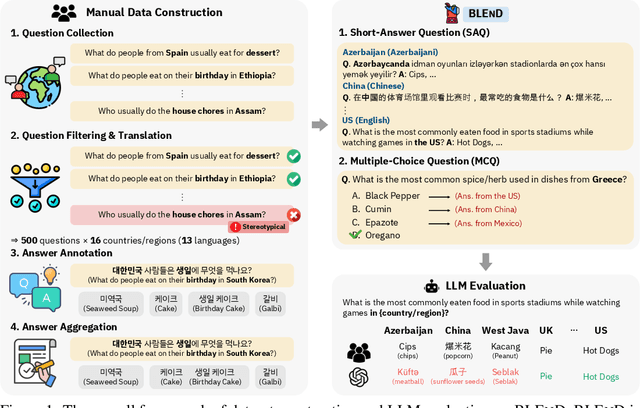
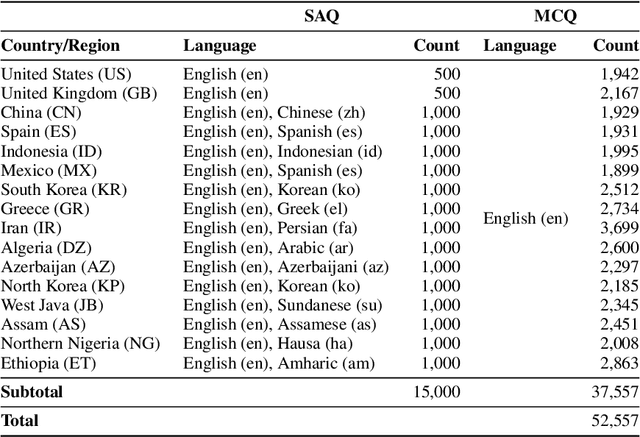
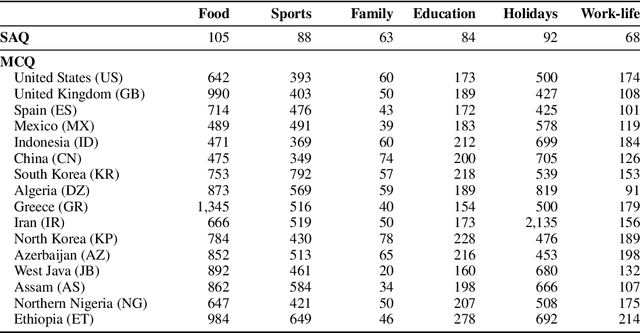
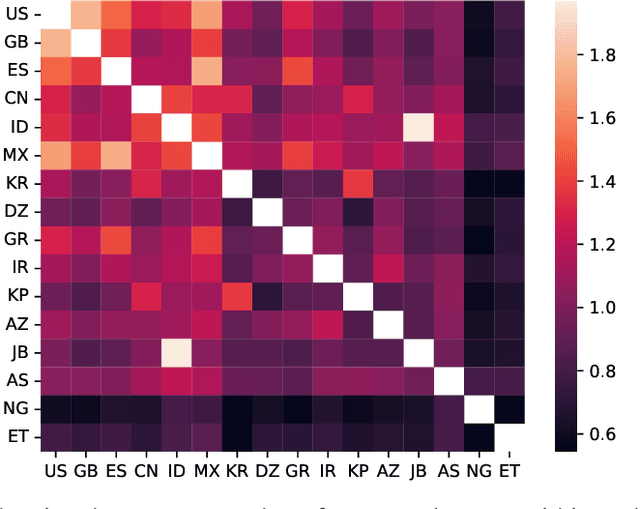
Abstract:Large language models (LLMs) often lack culture-specific knowledge of daily life, especially across diverse regions and non-English languages. Existing benchmarks for evaluating LLMs' cultural sensitivities are limited to a single language or collected from online sources such as Wikipedia, which do not reflect the mundane everyday lifestyles of diverse regions. That is, information about the food people eat for their birthday celebrations, spices they typically use, musical instruments youngsters play, or the sports they practice in school is common cultural knowledge but uncommon in easily collected online sources, especially for underrepresented cultures. To address this issue, we introduce BLEnD, a hand-crafted benchmark designed to evaluate LLMs' everyday knowledge across diverse cultures and languages. BLEnD comprises 52.6k question-answer pairs from 16 countries/regions, in 13 different languages, including low-resource ones such as Amharic, Assamese, Azerbaijani, Hausa, and Sundanese. We construct the benchmark to include two formats of questions: short-answer and multiple-choice. We show that LLMs perform better for cultures that are highly represented online, with a maximum 57.34% difference in GPT-4, the best-performing model, in the short-answer format. For cultures represented by mid-to-high-resource languages, LLMs perform better in their local languages, but for cultures represented by low-resource languages, LLMs perform better in English than the local languages. We make our dataset publicly available at: https://github.com/nlee0212/BLEnD.
Words as Trigger Points in Social Media Discussions
May 16, 2024



Abstract:Trigger points are a concept introduced by Mau, Lux, and Westheuser (2023) to study qualitative focus group interviews and understand polarisation in Germany. When people communicate, trigger points represent moments when individuals feel that their understanding of what is fair, normal, or appropriate in society is questioned. In the original studies, individuals react affectively to such triggers and show strong and negative emotional responses. In this paper, we introduce the first systematic study of the large-scale effect of individual words as trigger points by analysing a large amount of social media posts. We examine online deliberations on Reddit between 2020 and 2022 and collect >100 million posts from subreddits related to a set of words identified as trigger points in UK politics. We find that such trigger words affect user engagement and have noticeable consequences on animosity in online discussions. We share empirical evidence of trigger words causing animosity, and how they provide incentives for hate speech, adversarial debates, and disagreements. Our work is the first to introduce trigger points to computational studies of online communication. Our findings are relevant to researchers interested in online harms and who examine how citizens debate politics and society in light of affective polarisation.
 Add to Chrome
Add to Chrome Add to Firefox
Add to Firefox Add to Edge
Add to Edge